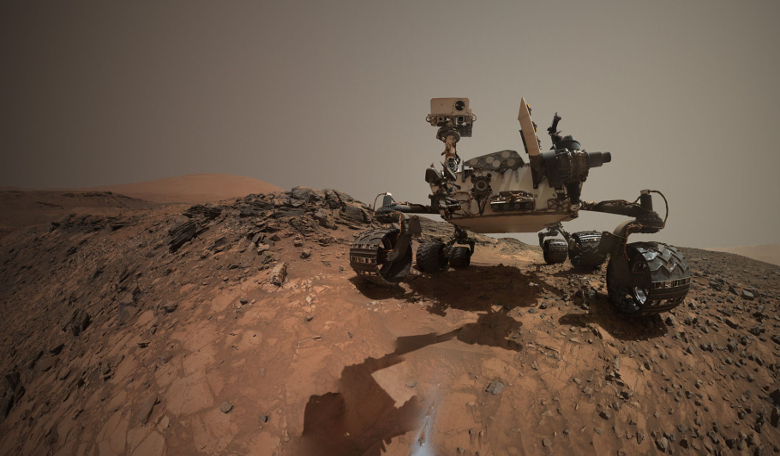Using data gathered from NASA's Mars Science Laboratory rover, Curiosity, scientists have discovered an unexpected mineral in a rock sample at Gale Crater, prompting a rethink on how the Red Planet may have evolved.
Since landing in August 2012, Curiosity has been studying Gale Crater – a feature 154 kilometers (96 miles) in diameter which lies between the martian northern and southern hemisphere. It is located in the northwestern part of the Aeolis quadrangle, a region that is of special interest to geologists because it contains a 2 – 4 km (1.2 – 2.5 mile) high mound of layered sedimentary rocks, known as ‘Mount Sharp.’
Last year however, after using the rover's X-ray diffraction instrument to analyse data collected from a location named "Buckskin,” the results revealed a surprising constituent; significant amounts of a silica mineral called tridymite.
Tridymite is generally associated with silicic volcanism, an explosive type of volcanism that on Earth can cover vast areas called flood basalt provinces, but on Mars, tridymite was not thought to be important or even present. Accordingly, this discovery throws into question the volcanic history of Mars as it suggests, it too has home to this type of violent volcanism.
"On Earth, tridymite is formed at high temperatures in an explosive process called silicic volcanism. Mount St. Helens, the active volcano in Washington State, and the Satsuma-Iwojima volcano in Japan are examples of such volcanoes. The combination of high silica content and extremely high temperatures in the volcanoes creates tridymite," said Richard Morris, NASA planetary scientist at Johnson and lead author of the paper. "The tridymite was incorporated into 'Lake Gale' mudstone at Buckskin as sediment from erosion of silicic volcanic rocks."
Using Earth as a test-bed, scientists have re-examined the way tridymite forms to see if it could form at low temperatures, therefore dissociating the connection specifically with silicic volcanism. Despite research into other reasonable geological processes, none were found that could account for formation at the temperatures required.
"I always tell fellow planetary scientists to expect the unexpected on Mars," said Doug Ming, ARES chief scientist at Johnson and co-author of the paper. "The discovery of tridymite was completely unexpected. This discovery now begs the question of whether Mars experienced a much more violent and explosive volcanic history during the early evolution of the planet than previously thought."











